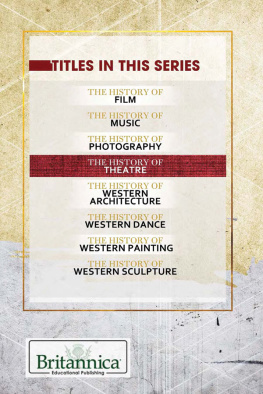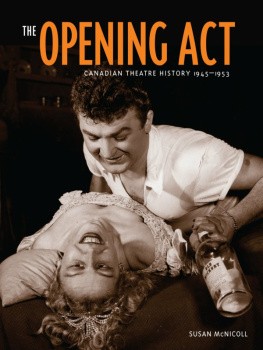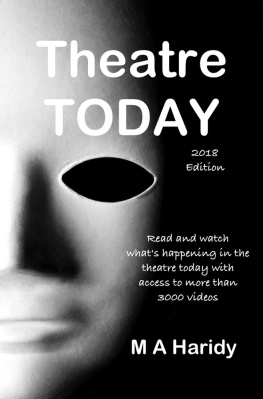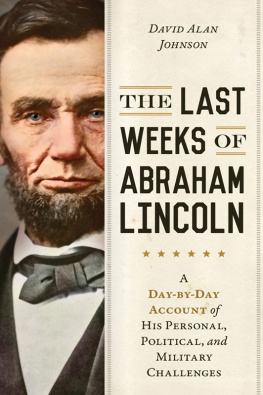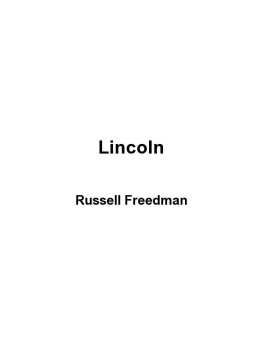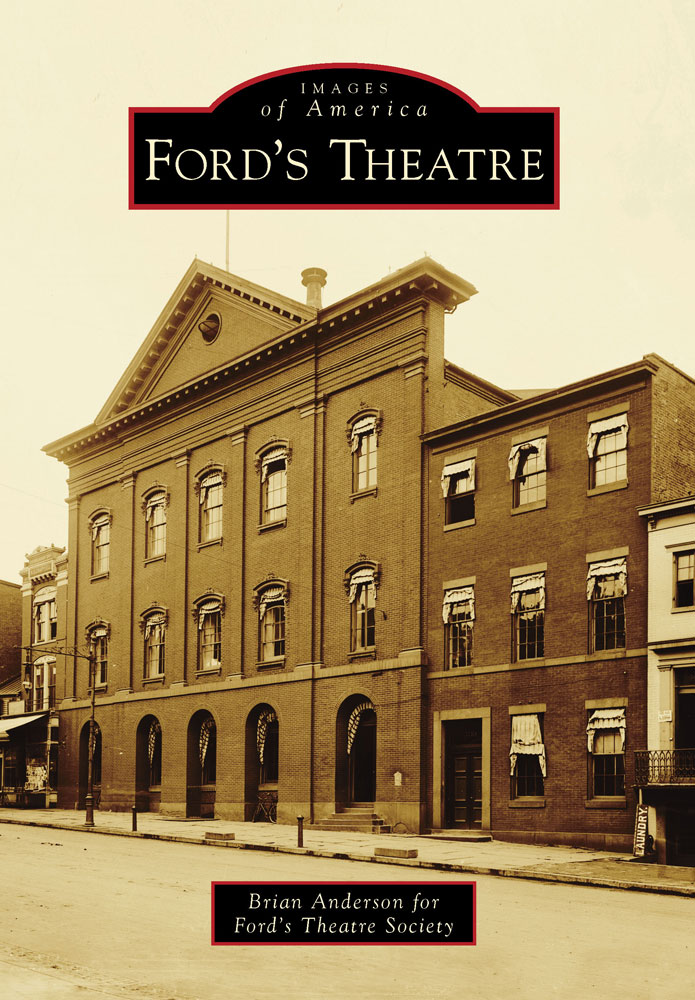
IMAGES
of America
FORDS THEATRE

Fords Theatre in Washington, DC, combines a historically accurate reproduction of the performance space as it existed on April 14, 1865the night of President Lincolns assassinationwith the required amenities of a modern theater. This image shows the theaters interior, including the stage, Presidential Box, seating areas, and control booth, upon the completion of its most recent renovation in 2009. (Photograph Maxwell MacKenzie; Fords Theatre Society.)
ON THE COVER: Around 1900, the former Fords Theatre was at the nadir of its existence. It had been 35 years since the building was last used for public entertainment, and it would be another 30-plus before the historic structure would become a public landmark of Lincolns presidency. (Library of Congress.)
IMAGES
of America
FORDS THEATRE
Brian Anderson for
Fords Theatre Society

Copyright 2014 by Brian Anderson for the Fords Theatre Society
ISBN 978-1-4671-2112-5
Ebook ISBN 9781439642672
Published by Arcadia Publishing
Charleston, South Carolina
Library of Congress Control Number: 2013946347
For all general information, please contact Arcadia Publishing:
Telephone 843-853-2070
Fax 843-853-0044
E-mail
For customer service and orders:
Toll-Free 1-888-313-2665
Visit us on the Internet at www.arcadiapublishing.com
This book is dedicated to the people whose hard work, creativity, and support today make Fords Theatre the premier Washington, DC, destination to learn about and enjoy Abraham Lincoln and his legacy. The book also is dedicated to my familyMerry, Eric, Laura, and Markwho encouraged me to start, and finish, it.
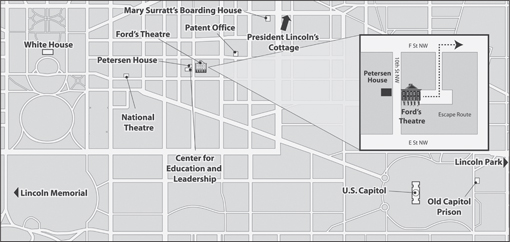
This map shows the location of Fords Theatre in downtown Washington, with some current and historical reference points. (Map by Gary Erskine.)
CONTENTS
ACKNOWLEDGMENTS
This project was a team effort by talented people who contributed their different skills and expertise and who shared a commitment to make this book accurate, interesting, and complete.
Fords Theatre Society interns Allison Hartley, Drew Barker, and Emma Bingham performed historical research, found relevant images, and managed the technical process of creating the book. Sarah Jencks, the societys director of education, managed this effort, introduced me to the right research librarians, interacted with Arcadia Publishing, and did basic research whenever necessary.
Fords Theatre Society associate director of communications Lauren Beyea and art director Gary Erskine obtained or created many of the images in the book.
Lisa Cassara, Frankie Hewitts daughter, sent us fascinating memorabilia from her family records about the early history of Fords Theatre Society.
National Park Service museum technician Allison Dixon guided us through file cabinets filled with historical information and images. National Park Service rangers Eric Martin and Ricca Sarson and former historian Gary Scott answered our questions about the theaters history. Robert D. Cochran, of the District of Columbia Baptist Convention, educated us about the First Baptist Church. Eric Boyle, of the Otis Historical Archives at the National Museum of Health and Medicine, helped us obtain images of the Army Medical Museum once located in the building. The First Baptist Church of the City of Washington, DC, and the George Washington University both allowed us to photograph historic items in their possession.
Early drafts were reviewed and improved through the edits and comments of Fords Theatre Society director Paul R. Tetreault, director of programming Kristin Fox-Siegmund, director of communications and marketing Liza Lorenz, deputy director of development Jennifer Kiefer Thomas, special events manager Alicia Brooks, programming operations manager Sarah Robinson, curator of exhibitions Tracey Avant, former National Park Service assistant superintendent Rae Emerson, former Library of Congress Civil War specialist John R. Sellers, and Anne Rollins of the Historical Society of Washington, DC.
Faye Haskins and Michele Casto, both of the DC Public Library Special Collections, and Michelle Krowl, Library of Congress Civil War specialist, helped find and obtain historical information from their institutions.
Deborah Reese, my assistant at OMelveny & Myers LLP, took care of all clerical needs with her usual cheerfulness and efficiency.
Unless otherwise indicated, images in this book appear courtesy of Lisa Cassara (Cassara); Fords Theatre Society (FTS); Historical Society of Washington (HSW); the Library of Congress, Prints and Publications Division (LOC); District of Columbia Martin Luther King Jr. Memorial Library, Washingtoniana Division (MLK); or National Park Service, Fords Theatre National Historic Site (NPS).
INTRODUCTION
Fords Theatre is primarily known as the place where, on the evening of Friday, April 14, 1865, Pres. Abraham Lincoln was assassinated by John Wilkes Booth. While this horrifying incident defines Fords Theatre in American history, it represents only a tiny slice of the sites 180-year life.
Like most old commercial buildings, the structure called Fords Theatre has served different purposes in different eras. It was built in 1833 as home to the First Baptist Church of Washington. For 26 years, a racially diverse congregation met here between the two centers of federal governmentthe Capitol building and the Executive Mansion. For most of those years, the presiding pastor was the Reverend Obadiah Brown, an influential Baptist leader and founder of Columbian College, now called the George Washington University.
In 1859, church leaders relocated the congregation to Thirteenth Street and put the building up for sale. John T. Ford, a theater owner and producer from Baltimore, Maryland, who long had wanted to expand his mid-Atlantic entertainment business to the Washington market, rented the structure in 1861 and later purchased it. After a massive fire in 1862, Ford reinvested in a new and opulent theater that attracted large crowdsincluding, on several occasions, President Lincoln, who enjoyed theater as a distraction from the burdens of his office. On April 14, 1865, Lincoln attended the 495th (and last) performance at Fords New Theatre.
After the presidents assassination, the building became a military crime scene controlled by the War Department. Regaining custody after the conspirators were captured, tried, convicted, and hanged, John T. Ford sought to resume his business, but unnamed citizens threatened to burn the theater down if he dared desecrate the site of Lincolns death with what were widely viewed as morally questionable amusements. Ford sold the theater to the federal government, and over the next 77 years, the building served as a storage site for Civil War soldiers medical records, a workplace for clerks making pension decisions for veterans, a medical museum, and editorial offices for preparation of a medical history of the Civil War. Those decades of bureaucratic use were interrupted in 1893 when an ineptly managed basement excavation project caused parts of all three floors to collapse. The incident killed 22 people, injured 65 others, and further embellished the theaters cursed reputation.
Next page

